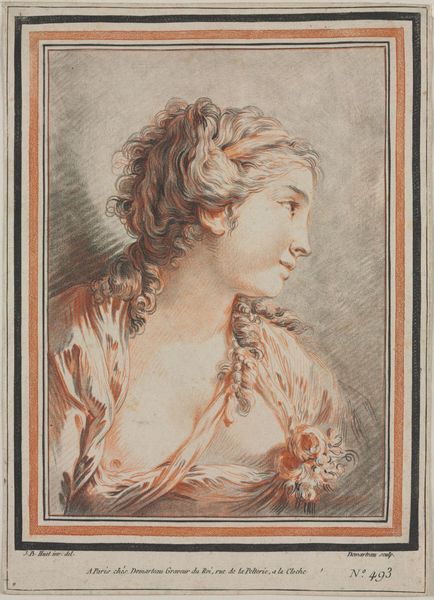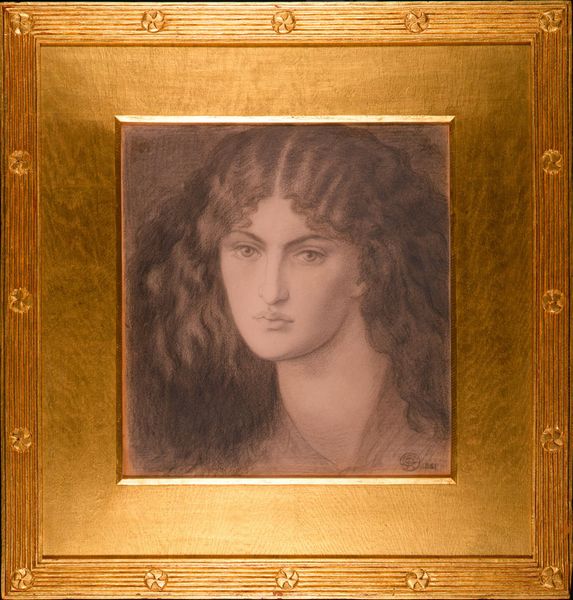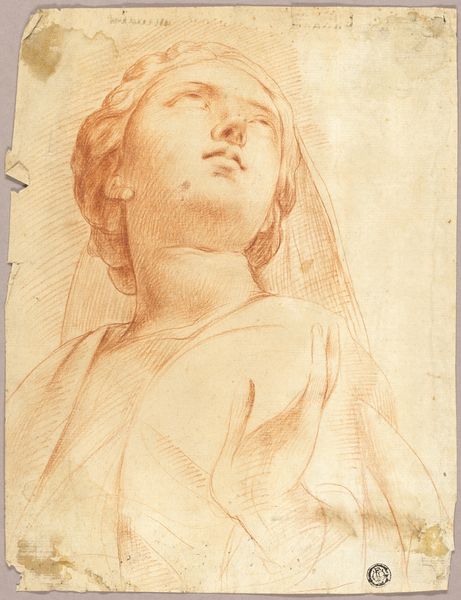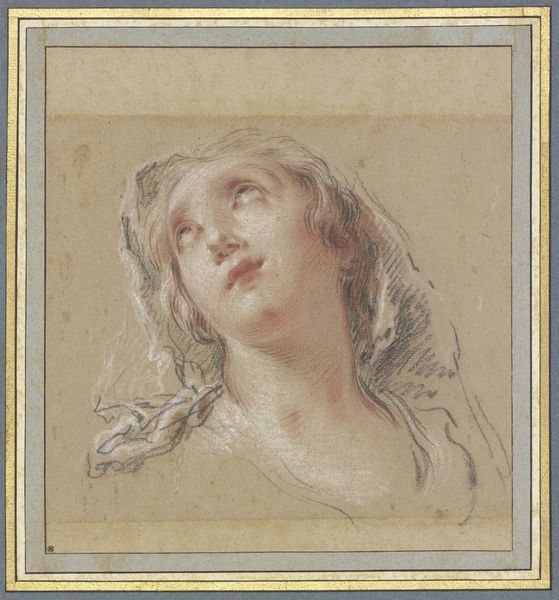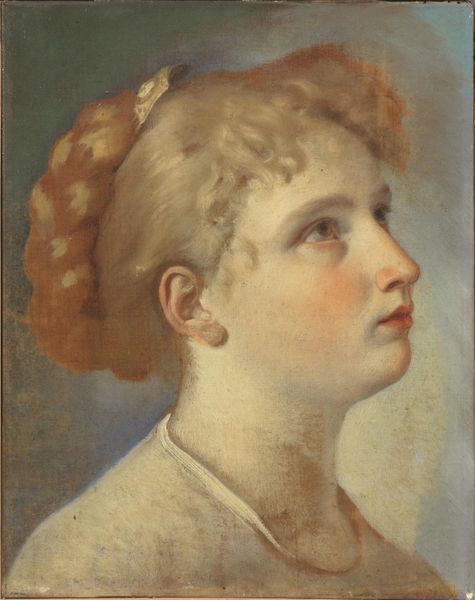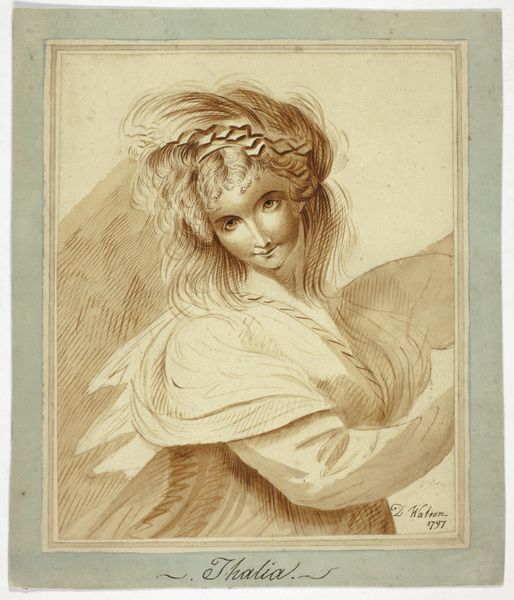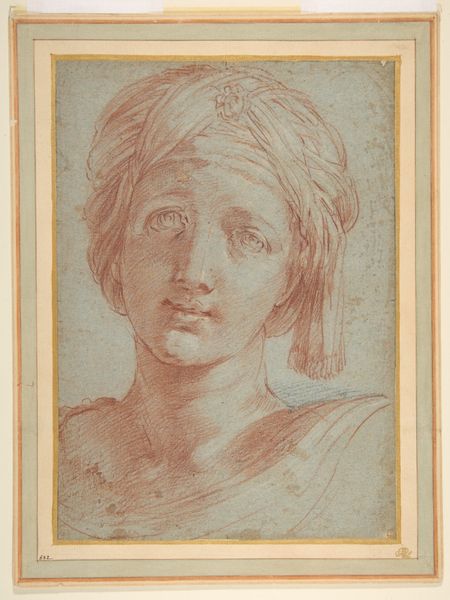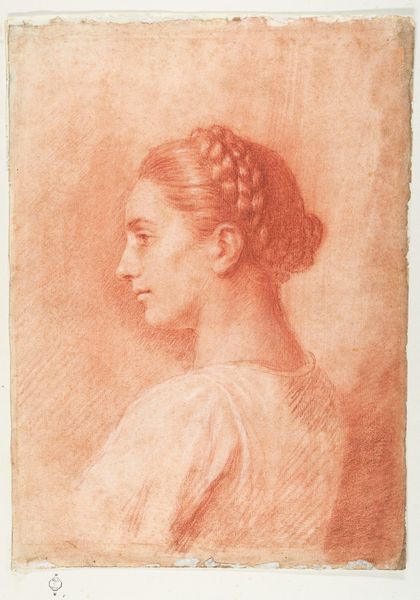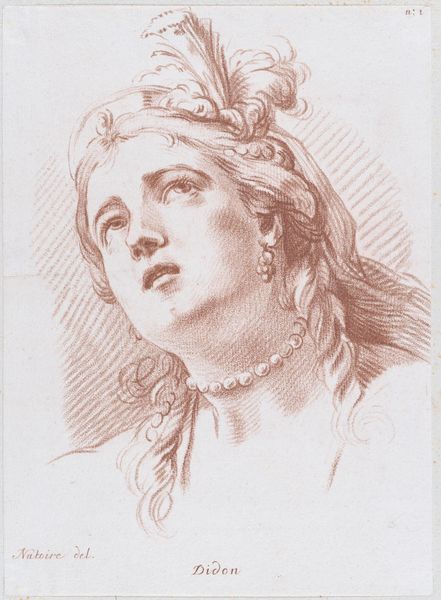
Dimensions: 350 × 240 mm
Copyright: Public Domain
Editor: This is Simeon Solomon's "Head," created around 1880. It's a charcoal drawing. There's a stillness about her; what strikes me most is how ethereal the figure appears, almost fading into the background. What do you see in this piece? Curator: I see the lingering echoes of Romanticism, yes, but also Solomon's grappling with identity in a period of intense social constraints. Look at the androgynous quality he imbues in the figure. Consider how, as a Jewish, gay artist in Victorian England, Solomon consistently explored themes of desire, transgression, and marginalized identities within a restrictive environment. Does this soften the stillness for you, or sharpen it? Editor: It sharpens it, definitely. Knowing his background casts her expression in a new light, it becomes something almost defiant. How does the medium contribute to this? Curator: The softness of the charcoal, the delicate blending, can be read as a kind of vulnerability, perhaps even a veiled critique of the rigid masculinity that dominated Victorian art. Think about the intentional ambiguity Solomon creates. He resists easy categorization, and this resistance becomes a powerful statement about the fluidity of identity. It dares us to question societal norms. Editor: So the softness isn't just aesthetic; it's a challenge. Curator: Precisely! Solomon uses beauty as a tool to subvert expectations. Where others presented idealized visions, he offers a complex and layered portrait of humanity. How does it make you reflect on art made today? Editor: I hadn’t considered it that way before! This conversation has broadened my understanding and encouraged me to consider identity and resistance when viewing artwork in general. Thanks! Curator: Indeed. Understanding an artwork's social context allows us to develop much deeper insights.
Comments
No comments
Be the first to comment and join the conversation on the ultimate creative platform.
